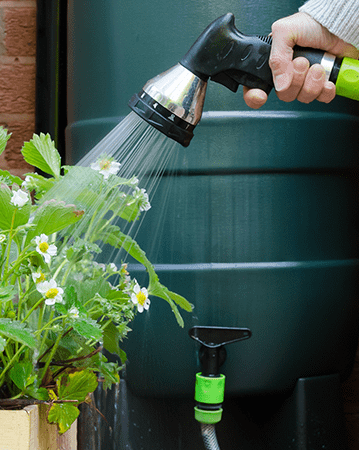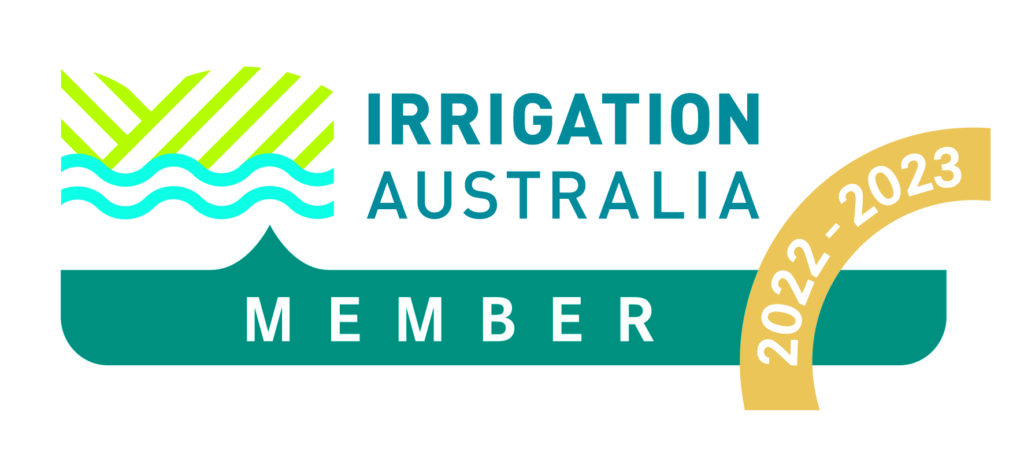We don’t just supply and install irrigation systems. We can also supply and install a variety of water storage solutions that will help you conserve water and reduce your water bill. Plus, you’ll always have a backup should the taps run dry for whatever reason. If you’re considering installing a water storage system, our team can provide the best solution for your needs.
It’s never a bad idea to set up a water storage system. After all, water is Earth’s most precious resource. All life depends on it, so why not store some of it so that you’re never caught without it?

When you consider water storage, you need to consider what purpose it will be useful for.
Water Storage is useful for:
How much water storage do I need?
Water tanks hold a set amount of water, and therefore can only be filled up once during a rain event unless the water is being used or transferred to another tank. Generally, we don’t irrigate when it’s raining, so the question is asked how much do I need?
To answer this question, we consider questions like the size of your landscape, how much water does your roof capture and how quickly will you use the stored water. Using this information we can start to map out how much water is getting used over a period of time, to help provide you with the best water storage solution for your circumstances.
Watering your landscape regularly is critical if you want it to remain green, lush and healthy. However, regularly irrigating your landscape can become quite costly if you’re solely using municipal water supply. With our storage tanks, you collect free and abundant rainwater to use on your landscape when you need it most.
Having a large tank full of rainwater can be a lifesaver in the unfortunate event that a fire breaks out. Having this on hand could make the difference between life and death, plus it could save your property from what could otherwise become catastrophic damage.
Water storage tanks can also come in handy by supplying water to your toilets and laundry, among other things. The water doesn’t necessarily need to be used in your garden. This will help you reduce your water bill at the end of every month while conserving water and thus protecting the environment. Never feel like you’re wasting water ever again.
Having a water storage tank on your property is also great for using on pot plants, whether indoors or outside. Collect the rainwater and then use it later when you need it.
Water tanks hold a set amount of water, and therefore can only be filled up once during a rain event unless the water is being used or transferred to another tank. Generally, we don’t irrigate when it’s raining, so the question is asked, “How much do I need?”
To answer this question, we consider factors like the size of your landscape, how much water your roof captures, and how quickly you will use the stored water. Using this information, we can start to map out how much water is getting used over a period of time, to help provide you with the best water storage solution for your circumstances.
Having rainwater in a tank ready to go is a great feeling, but how do I use it? As you may have already gathered there are a lot of different considerations to take into account, but some common equipment that is used in conjunction with rainwater tanks are:
Contact us today and speak to one of our experts who can advise you on your water storage needs in Brisbane. We will get you set up in no time!
Steve lives in a town where the water pressure isn’t great, so Steve installed a tank and a pump to improve the flow and pressure that he currently receives from the local council. Steve decided to install a top-up into his tank which will keep his tank filled to a preset level.
Steve has a 10 000L tank, which gets filled up each time it rains (this can vary). Steve irrigates his lawn 3 times per week and uses 1000L of water per week.
Considering that every tank has a certain amount of water that doesn’t get used (the bottom 10% or 1000L) we will say that Steve has 9 weeks worth of water.
Every time it rains Steve has the potential to store 9000L which is equivalent to about $18.
A 10000L tank with a basic pump cost approximately $3500. Steves tank needs to be completely filled 195 times before he starts saving money (this is without the cost of pump services and power usage).
For Steve, having a tank is a good option because the purpose of the tank is not to save water but to hold water that allows his irrigation system to work. If Steve was trying to save money then the option of installing a tank may not be the best idea. If Steve wanted to wear the cost and attribute the loss to helping the environment then no one can put a price on that except Steve.
Water tanks are a fantastic option if they solve a functional issue such as low pressure or low flow. If water tanks are your only water source then your mindset shifts because you want to capture as much water as you can because that means you won’t have to buy water to have a shower.
If you still have questions about water tanks or what could be the best solution for you, please give us a call and we can discuss your requirements in more depth.
Send us a message, and we’ll get back to you soon

This website, the contents and images are the property of Bob’s Irrigation Services. QBCC License Number 15055221 All rights reserved.





